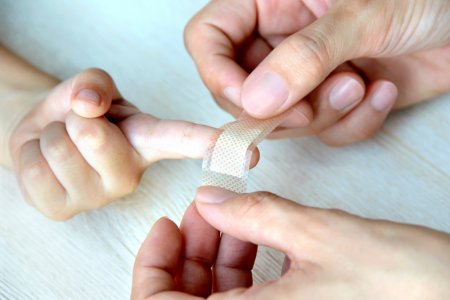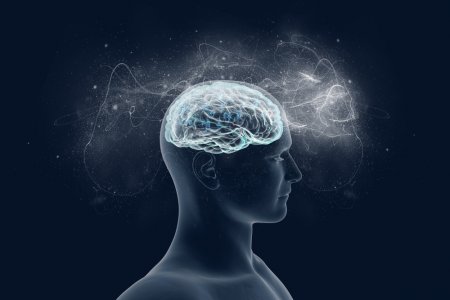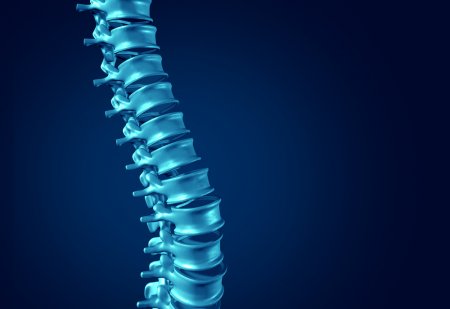Bioelectronics of the XXI century: 5 technologies that will change medicine
"Smart" temporary tattoos
Biotattoo, or e-skin technology, contain flexible electronics that can be powered remotely and perform various medical functions. They are applied directly to the skin and have a range of possible applications: for example, they are able to keep track of the various biometric indicators, the current level of activity of a person or location. Today in Massachusetts (USA) in clinical trials of such biotatuirovok for neonatal intensive care. If they are successful, the first batch of electronic tattoos will go into production before the end of this year.
Epidermal biochemical sensors
These sensors are mounted on the surface of the skin and can analyze human sweat, saliva or tears, and send the data to your smartphone. They are able to track the biophysical condition of the person, his level of activity. Earlier this year, flexible biosensor for diabetes was submitted to the University of California, which can continuously monitor the blood sugar level without injections and collection of any analyzes. Now the university laboratory aims to commercialize this and several similar sensors with the help of local and international companies.
Nanosystems drug delivery
Laboratory of Seoul National University in South Korea are developing the next generation of high-tech biomedical systems. Their goal - to create nanoelectronic systems for drug delivery and tissue reconstruction in a patient's body. In 2014, scientists at the University already presented a flexible wearable electronic patch that contains a data storage device, diagnostic tools, and supply of drugs.
Multi patch can track the movement of patients with Parkinson's disease and save the data in the device memory. When the patch pinpoint patterns tremor, heat sensors inside release is strictly metered dose of medication to be delivered to the patient through a carefully engineered nanoparticle.
Injectable brain sensors
Although today implants already exist for monitoring patients with epilepsy and brain damage, they remain rigid and invasive, making it very difficult long-term monitoring of patients. In place they can come to develop a group of professor of chemistry at Harvard University, Charles Lieber. Nanodevices created so small that they can be injected directly into the brain using a thin needle. After injection into the patient's skull is set nanoelectronic network that can monitor the activity of the brain to stimulate certain tissue and even interact with neurons. While development is tested and is rather on the concept level.
Permanent implants
In early 2015, scientists from the Higher Engineering School of Lausanne (Switzerland), Stephanie Lacour and Gregoire Courtine announced that they have developed a new e-Dura implant for the treatment of spinal injuries. The small device is implanted directly into the patient's spinal cord and can send out electrical and chemical impulses in the course of rehabilitation. Elasticity and biocompatibility of devices reduce the risk of tissue damage and inflammation, which means that the implant may be in the body for a long time. With the help of paralyzed mice took on the opportunity to go after a few weeks of training.
Biotattoo, or e-skin technology, contain flexible electronics that can be powered remotely and perform various medical functions. They are applied directly to the skin and have a range of possible applications: for example, they are able to keep track of the various biometric indicators, the current level of activity of a person or location. Today in Massachusetts (USA) in clinical trials of such biotatuirovok for neonatal intensive care. If they are successful, the first batch of electronic tattoos will go into production before the end of this year.
Epidermal biochemical sensors
These sensors are mounted on the surface of the skin and can analyze human sweat, saliva or tears, and send the data to your smartphone. They are able to track the biophysical condition of the person, his level of activity. Earlier this year, flexible biosensor for diabetes was submitted to the University of California, which can continuously monitor the blood sugar level without injections and collection of any analyzes. Now the university laboratory aims to commercialize this and several similar sensors with the help of local and international companies.
Nanosystems drug delivery
Laboratory of Seoul National University in South Korea are developing the next generation of high-tech biomedical systems. Their goal - to create nanoelectronic systems for drug delivery and tissue reconstruction in a patient's body. In 2014, scientists at the University already presented a flexible wearable electronic patch that contains a data storage device, diagnostic tools, and supply of drugs.
Multi patch can track the movement of patients with Parkinson's disease and save the data in the device memory. When the patch pinpoint patterns tremor, heat sensors inside release is strictly metered dose of medication to be delivered to the patient through a carefully engineered nanoparticle.
Injectable brain sensors
Although today implants already exist for monitoring patients with epilepsy and brain damage, they remain rigid and invasive, making it very difficult long-term monitoring of patients. In place they can come to develop a group of professor of chemistry at Harvard University, Charles Lieber. Nanodevices created so small that they can be injected directly into the brain using a thin needle. After injection into the patient's skull is set nanoelectronic network that can monitor the activity of the brain to stimulate certain tissue and even interact with neurons. While development is tested and is rather on the concept level.
Permanent implants
In early 2015, scientists from the Higher Engineering School of Lausanne (Switzerland), Stephanie Lacour and Gregoire Courtine announced that they have developed a new e-Dura implant for the treatment of spinal injuries. The small device is implanted directly into the patient's spinal cord and can send out electrical and chemical impulses in the course of rehabilitation. Elasticity and biocompatibility of devices reduce the risk of tissue damage and inflammation, which means that the implant may be in the body for a long time. With the help of paralyzed mice took on the opportunity to go after a few weeks of training.




